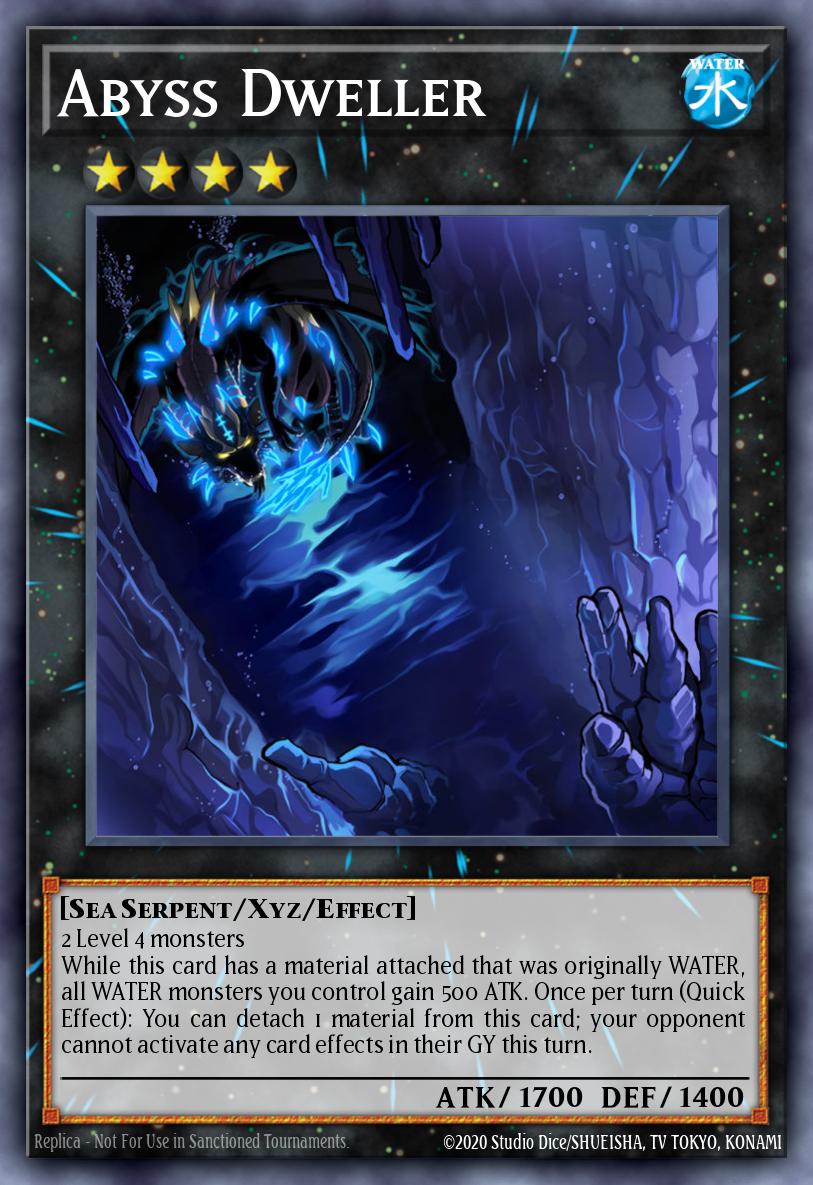 A common card in the Lunalight Orcust end board.
A common card in the Lunalight Orcust end board.If you recall the second article I wrote, you might remember me mentioning that Knightmare Mermaid is the best card in the Orcust deck. The reason that many considered the Orcust deck to be competitive was its splashability. Any deck that was able to bring out two monsters with different names could go into the "Full Orcust Combo." This included a set Orcust Crescendo and double protection from destruction with Dingirsu, the Orcust of the Evening Star. Decks like Lunalight Orcust were able to end turns with a floodgate, Orcust Crescendo, and Dingirsu, usually with another Rank 4 Xyz monster of choice (Abyss Dweller being a good option going blind).
With Konami's removal of Mermaid from the metagame, this engine was no more. Although I enjoy using a La Jinn the Mystical Genie of the Lamp and a Vorse Raider for the full combo, I understand that Mermaid needed to go. The Orcust engine was suffering from the same problem that Zoodiacs were in their prime: extreme saturation of the metagame. Nearly everyone was able to propel their deck into competitive relevance by adding a few cards into the main and extra deck.
It seems that this was the proverbial nail in the coffin for this group of musical instruments wreaking havoc against Avram and his friends.
However, for those of you who want to stick with the deck, fear not! The deck is still good. The release of a few new cards and the utilization of older cards helps the deck remain near the top. In this article, I will explain how the deck has changed and why you should stick with it.
Without further ado, let us string up these strange instruments once again and tune them for play.
What Do I Start With Now?
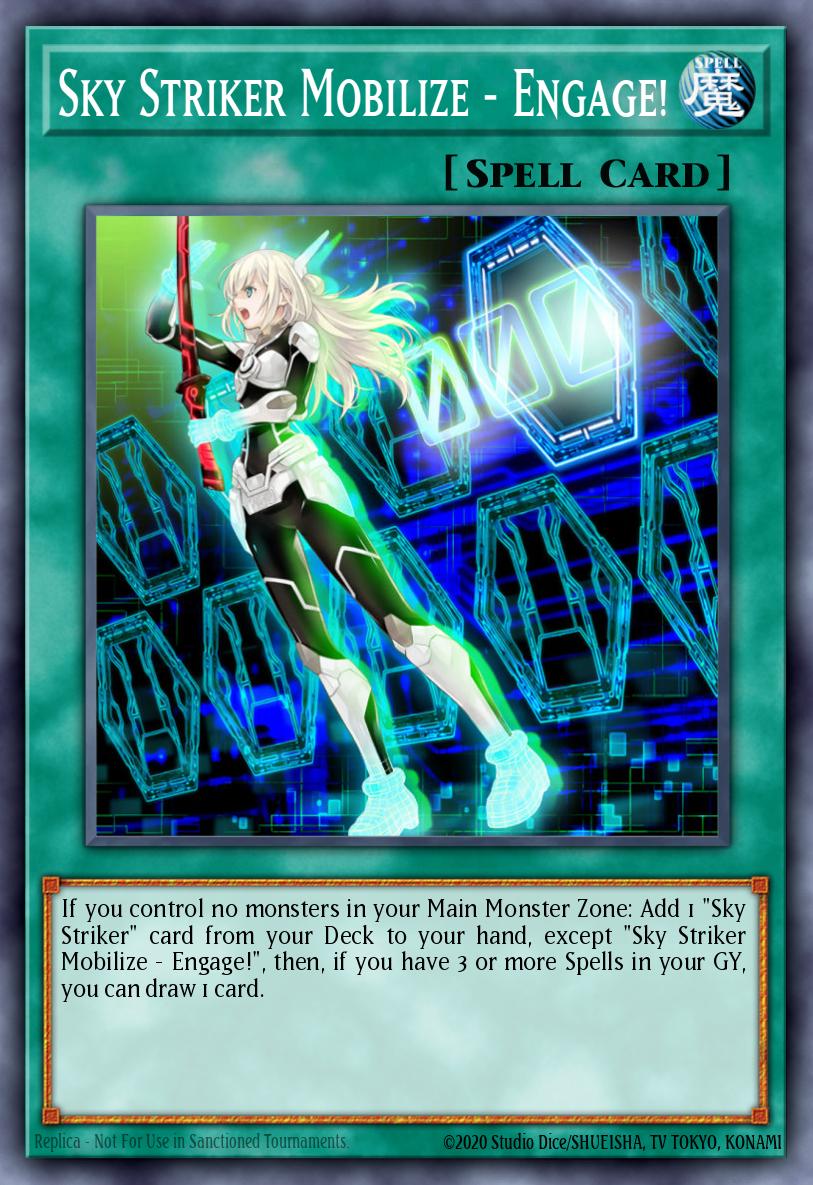 The main reason that Orcust was so good prior to the banlist was that any two monsters can become Galatea, Dingirsu, and a Crescendo/Babel. Orcust lists that topped events tended to play one-card engines that can make two monsters on the board with little investment.
The main reason that Orcust was so good prior to the banlist was that any two monsters can become Galatea, Dingirsu, and a Crescendo/Babel. Orcust lists that topped events tended to play one-card engines that can make two monsters on the board with little investment.The Sky Striker package (3 Sky Striker Mobilize - Engage!, 1 Sky Striker Mecha - Hornet Drones) can make two monsters without using the Normal Summon. Drones would summon Sky Striker Ace - Kagari, Kagari would add back the Drones, and Drones would make the second monster. Bada bing bada boom, you have 2 monsters with different names.
Another popular engine used was the Trickstar Engine. This consisted of 3 Trickstar Light Stage (at least until Konami limited it), 1 Trickstar Candina, and 1 Trickstar Corobane. Light Stage or Candina can search each other, and then they can search Corobane. Corobane would summon itself, and you now have two monsters.
Knightmare Corruptor Iblee (my favorite starter) can go directly into Mermaid on her own. With the release of Nibiru, the Primal Being, it became one of the best starters, due to the fact that it plays around that hand trap perfectly.
These two engines were some of the most consistent ways to go into the Mermaid. Other decks ran cards like Dangers (Danger! Nessie!, Danger!? Jackalope? and Danger!? Tsuchinoko!?), the Neo-Space engine, and a myriad of other monsters that summon themselves.
But with the ban of Mermaid, what should players use now?
Back to the Classics
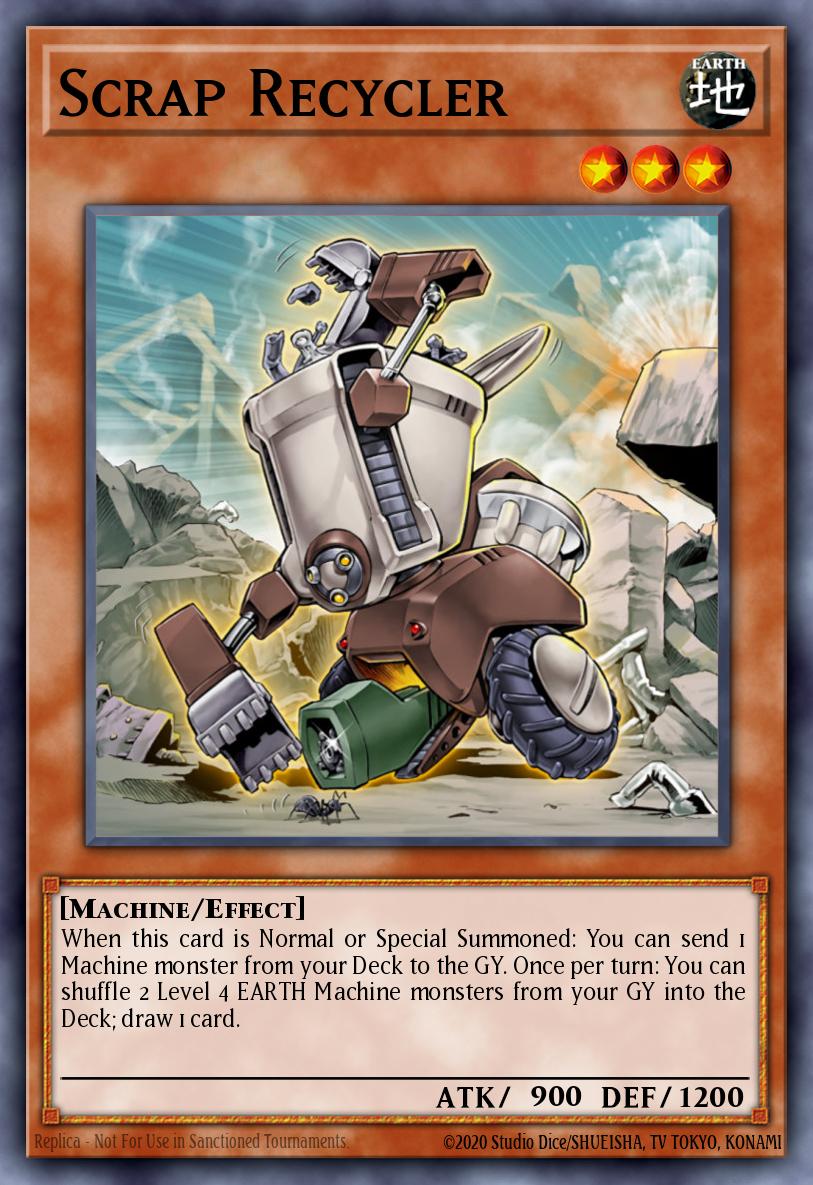 The better starter of the two. However, Mathematician can play around There Can Be Only One.
The better starter of the two. However, Mathematician can play around There Can Be Only One.Around the time that the deck was first released, players began looking for ways to send the Orcust Monsters to the GY on summon or with an effect. Armageddon Knight and Dark Grepher fit the bill perfectly. They were both level 4, searchable by Reinforcement of the Army, and can send those important Orcust monsters to the GY.
However, there were two other cards that had similar functions but slipped under the radar. Scrap Recycler and Mathematician, both lvl 3, send monsters to the GY when summoned. Mathematician is limited to a Normal Summon, and can only send a lvl 4 or lower monster. Recycler has no level restrictions whatsoever. But again, Armageddon and Grepher were preferred due to the fact that they are more searchable.
Now that Mermaid is banned, the "Orcust Combo" now needs to start with getting Orcust Harp Horror or the Orcust Knightmare into the GY immediately. That means we need to play these other forms of sending monsters to the GY. Play three of at least one of the aforementioned cards. Recycler is the better of the two, due to having no restrictions on level.
I also heard that Foolish Burial is a good card.
Wait, there are Other Orcust Cards?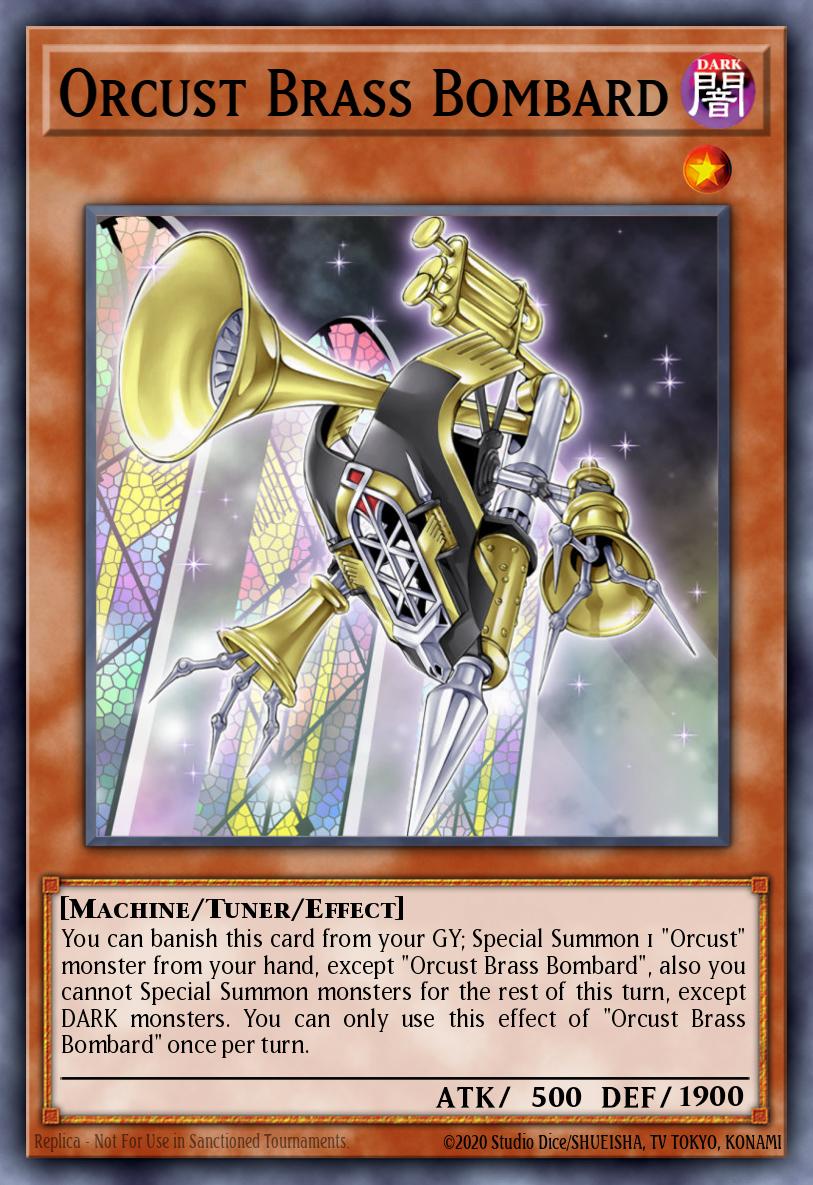
Basically forgotten by nearly every Orcust player is the lvl 1 tuner, Orcust Brass Bombard. While in the GY, you can banish it to Special Summon an "Orcust" monster from your hand. With Linkuriboh, it allows you to set up the Crescendo play through any hand trap that isn't Effect Veiler or Infinite Impermanence. If anything, you can end on a Dingirsu with two materials, which is still very good.
Now that there are not as many other engines in the deck, it is safe to increase the Orcust monster count in the main deck. I would recommend running 3 Harp and 3 Knightmare in the deck; you may think that Knightmare is a brick, but Orcustrated Return is now a necessary spell in the deck's strategy.
Return is a Spell Card that, by sending an "Orcust" or "World Legacy" monster from your hand or field to the GY, allows you to draw 2 cards (I think? I have no idea what this card does).
Jokes aside, it is very good right now. It lets you draw into your other cards to help start your plays and past game one draw into your Side cards. I recommend playing two.
Why Is the Deck Still Good?
With these few changes out of the way, let us now talk about the cards that you should still play, and why the deck is still competitive.
The Orcust Cards
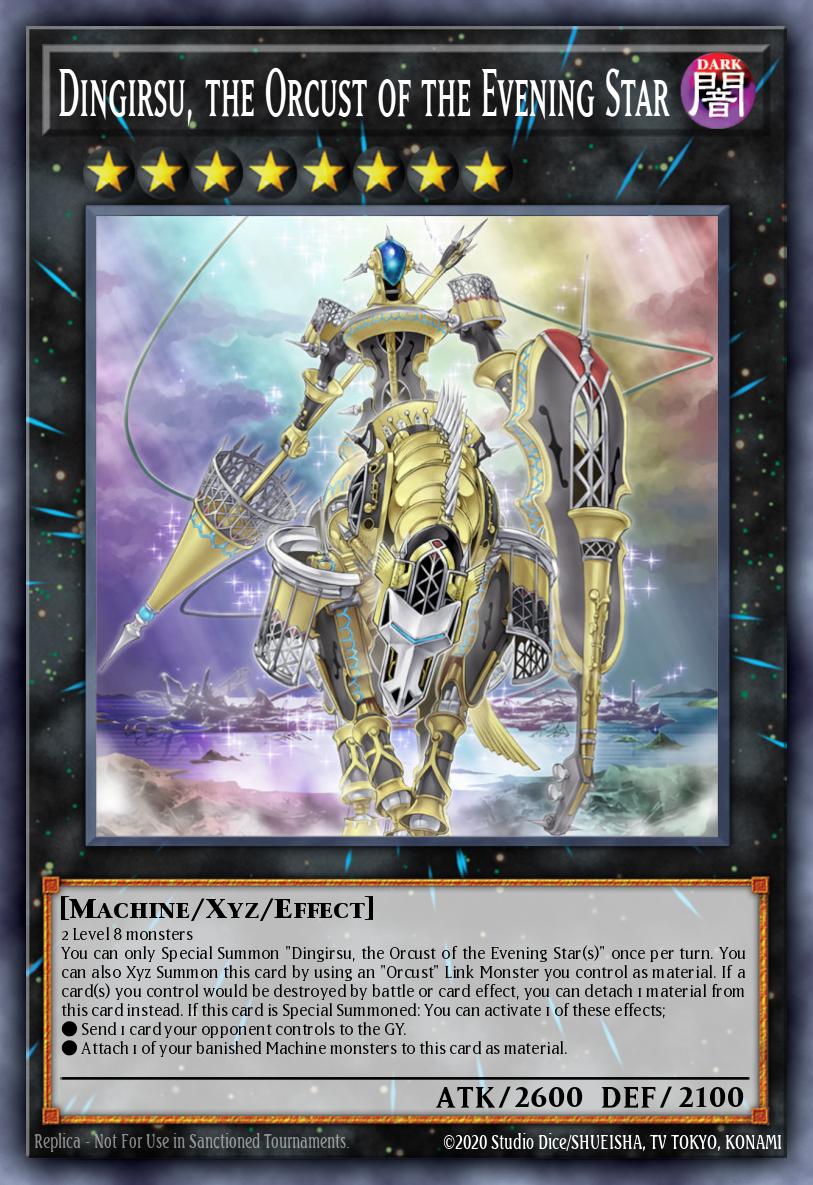 The deck would not be good if the engine itself were not good. The main reason the deck is still so prevalent in the competitive scene is its resilience. Once the engine has been set up past turn 1, the deck can do many plays to finish out the game, usually by turn 3. Harp Horror and Orcust Cymbal Skeleton are two of the best main deck monsters. Harp gets you more monsters on the field and Cymbal lets you summon them back from the GY.
The deck would not be good if the engine itself were not good. The main reason the deck is still so prevalent in the competitive scene is its resilience. Once the engine has been set up past turn 1, the deck can do many plays to finish out the game, usually by turn 3. Harp Horror and Orcust Cymbal Skeleton are two of the best main deck monsters. Harp gets you more monsters on the field and Cymbal lets you summon them back from the GY.Galatea, the Orcust Automaton is easily the best Link of the bunch. Just like the others, it lets you recycle the banished monsters, but it also allows you to set the ever-important S/T cards.
Dingirsu was the best boost the deck received in main sets. Not only does it protect your cards, but it has excellent, non-targeting removal of troublesome cards. The fact that you can summon it over any Orcust Link makes it easy to utilize.
Orcustrated Babel and Crescendo are both very good, each for their own reasons. Babel makes everything a Quick Effect. Using Dingirsu for disruption during your opponent's turn is excellent, and blocking attacks also helps. Crescendo is a searchable counter trap negate to stop the opponent in their tracks.
The Other Cards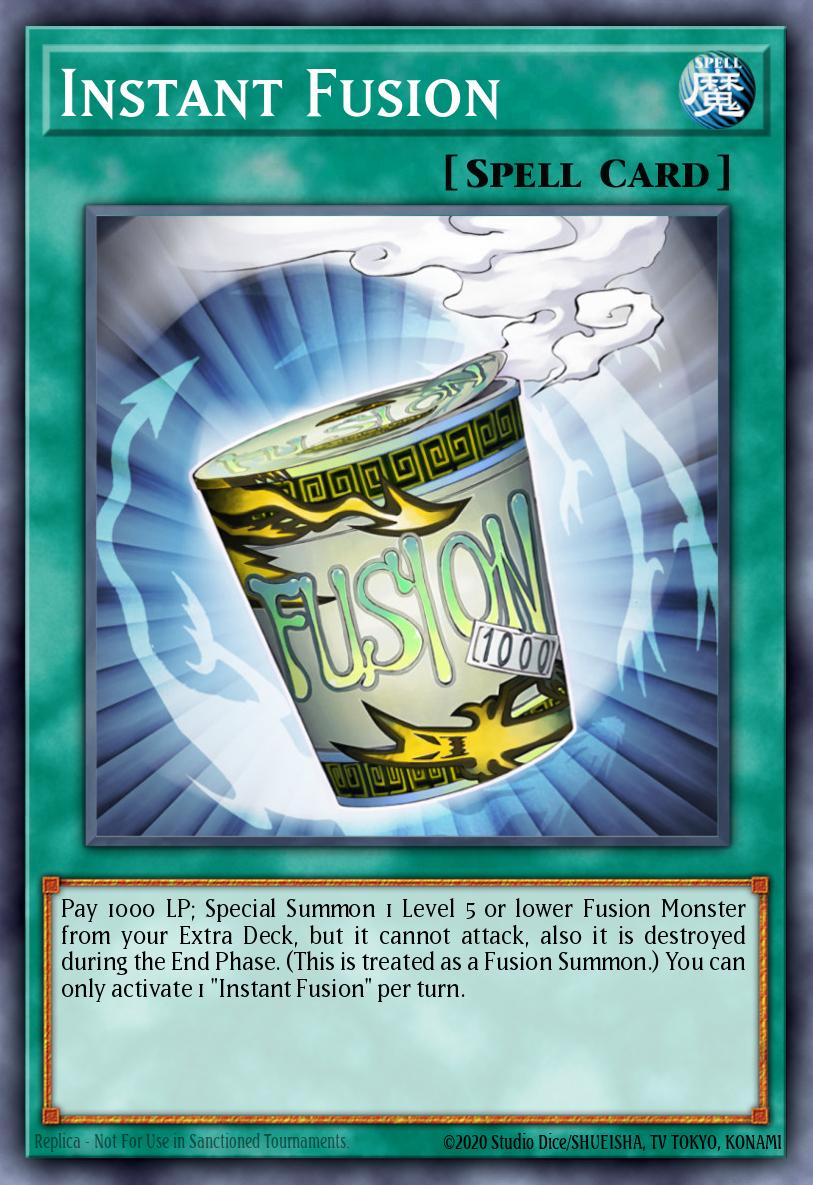
Since the start, Instant Fusion has been a necessary staple in the deck. Going first, it allows you to end with the full combo, as well as an added El Shaddoll Winda. Dingirsu would keep the Winda from being destroyed by the Instant Fusion's End Phase effect, leaving your opponent to deal with only one Special Summon on their turn. Going second, it can let you get out a Thousand-Eyes Restrict to help break your opponent's board. If anything, it can let you have another extender to end on the main combo.
Gizmek Orochi, the Serpentron Sky Slasher is also an excellent monster. It can provide another big body on the field for damage, while also getting rid of monsters.
Although a point of contention (as excellently laid out by my colleague baMMax in this article), it is easy to fit in a few hand traps to help keep other decks in check. I personally like running Effect Veiler, Ash Blossom and Joyous Spring, and Nibiru. All of those complement the strategy (especially Nibiru) and help with closing out games faster.
And Now, the Cons
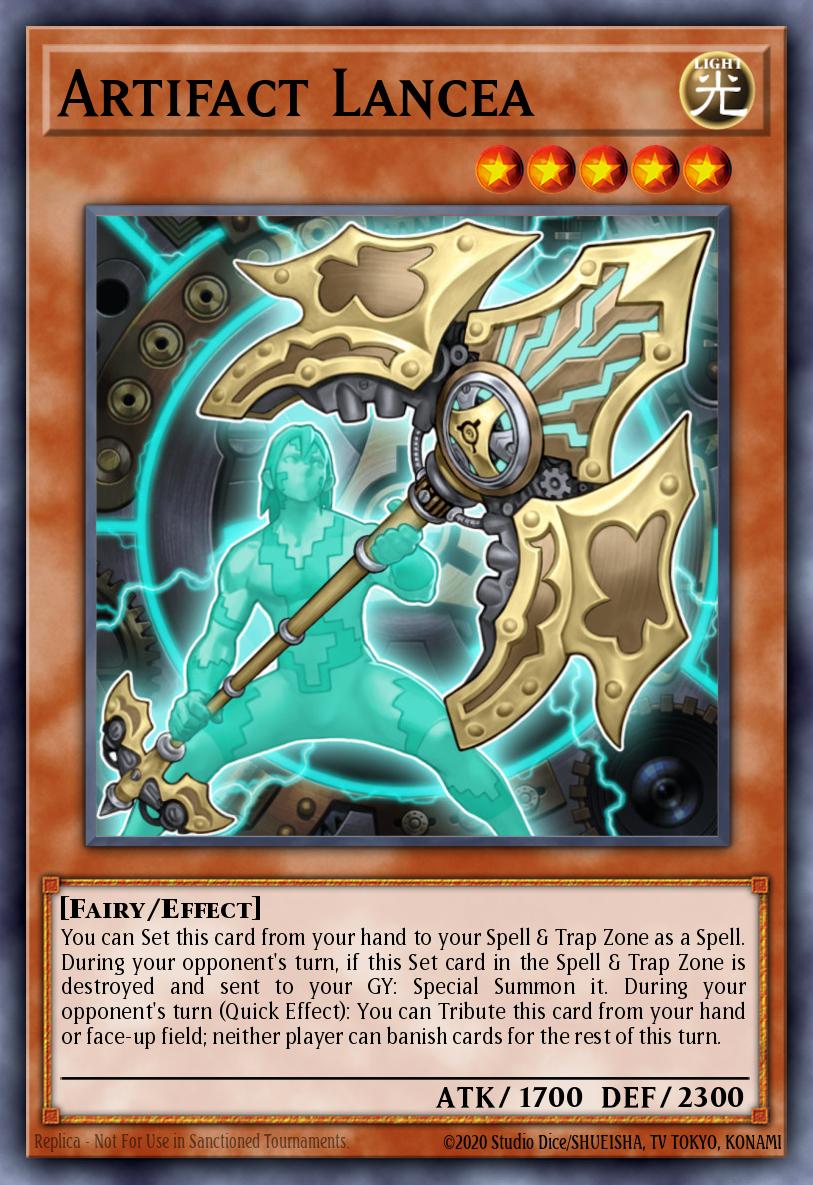 However, as with any deck, there is bound to be negative aspects to the playstyle. I will admit, Orcust has a few flaws.
However, as with any deck, there is bound to be negative aspects to the playstyle. I will admit, Orcust has a few flaws.With Konami's ban of Mermaid, the deck has become decidedly more fragile. A hand trap on the Normal Summon is more deadly than before; it is now paramount to get your monster to the GY. Even with no hand traps in your opponent's grasp, many more players have now begun to main deck copies of Nibiru. With no Iblee to help, the deck is now more susceptible to the Rock.
The biggest problem is the side deck against Orcusts; nearly all players seem to play Artifact Lancea in their side deck, which stops both players from banishing cards. With this restriction, you cannot do any plays. Super Polymerization can get rid of your monsters easily, without a chance to use your Crescendo.
Despite all of these factors against the deck, it can still persevere. If it wasn't able to, it would not be as present in the metagame as it is now.
Conclusion
Ever since Konami first released the deck in October of 2018 with Soul Fusion, I have been playing it. I have gone through all of its iterations, and still play the deck to this day.
In fact, this was the deck I played when I got my first invite with after playing in the competitive scene for a few years. I feel a personal attachment to this deck, and will keep going with it.
If you are looking for a fun, competitive deck, I highly recommend Orcusts. If you already play them, keep going! This deck still has it in it to be competitive.




